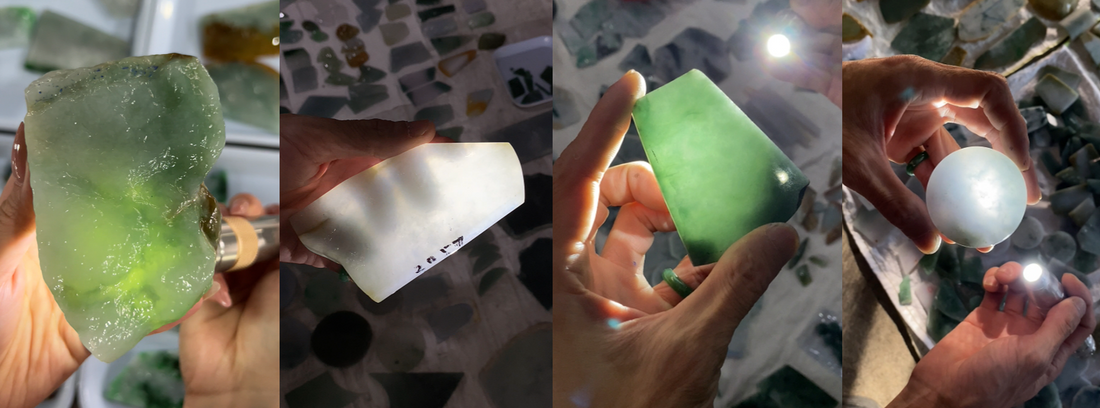
From Mountain to Market: How Jadeite Is Mined, Traded, and Crafted
If diamonds are born under pressure, then jadeite is born through mystery. Unlike the streamlined, globalized diamond supply chain, the jadeite world still operates with a mix of tradition, risk, and ancient ritual.
Let’s trace the incredible journey of jadeite—from deep in the earth to your hands.
✦ 1. Mined from the Misty Mountains of Myanmar
All gem-grade jadeite in the world comes from a single region in northern Myanmar (Burma), near the Uru River valley. These mountains are remote, jungle-covered, and rich in serpentine rock where jadeite forms under high pressure and low temperature over millions of years.
The mining process is intense and laborious:
- Some jadeite is extracted through open-pit mining.
- Others come from riverbed excavation or deep tunnel digging.
- Conditions can be harsh and dangerous—and most operations are state-monitored and restricted for legal export.
Rough jadeite comes in boulder form, its true quality hidden inside. This leads to the next unique phase…
✦ 2. The Public Auctions: Where Jadeite Is Bought “Blind”
Known as jadeite “gambling” (赌石), the buying of rough jadeite stones is both an art and a high-stakes game.
Every year, major jadeite auctions (called “公盘” or public sales) are held in Myanmar:
- Buyers from China, Hong Kong, Taiwan, and increasingly the West bid on unopened rough stones.
- They can only examine the skin (shell) of the boulder—its texture, translucence, and color leaks—before placing a bid.
- A single rough can fetch hundreds of thousands to millions, depending on potential.
Sometimes, a stone holds vivid green “Imperial” jade within. Other times, the inside is dull and worthless. That’s the gamble.
✦ 3. Cutting and Carving: The True Value Revealed
Once purchased, the rough is taken to expert cutting studios—mainly in Guangxi, Yunnan, and Guangdong.
This stage is where jadeite’s soul is revealed:
- Cutting is done cautiously, sometimes one millimeter at a time.
- High loss rate: Over 60–80% of material may be discarded to preserve the best part.
- Artisans examine every vein and inclusion before deciding how to shape it.
After cutting, carving begins:
- Some pieces remain simple (like bangles or cabochons).
- Others are sculpted into detailed Buddhist deities, animals, or symbolic motifs.
This process is often multi-generational craftsmanship, with decades of training and deep intuitive understanding of jade.
✦ 4. Setting and Customization: From Stone to Statement
Raw jade is rarely worn as-is. For high-end collectors, the next step is setting:
- Jewelry designers choose settings that highlight translucence and color.
- Options include 24k gold, 18k/14k fine gold, or diamond-paved mounts.
- Some clients co-create their piece—transforming jade into a bespoke heirloom that reflects their intention or spirit.
Custom work may take weeks to months, but the result is not just a gem—it’s a personal talisman, steeped in history and meaning.
✦ From Earth’s Depths to Human Hands
The journey of jadeite is long, complex, and layered with risk, skill, and reverence. It is not a mass-produced commodity. It is a living gem, passed from nature to artisan to wearer—with each touch adding a layer of story.
In the next chapter, we’ll explore a critical question:
How can you tell if a jadeite piece is truly natural—or has been treated or altered?
